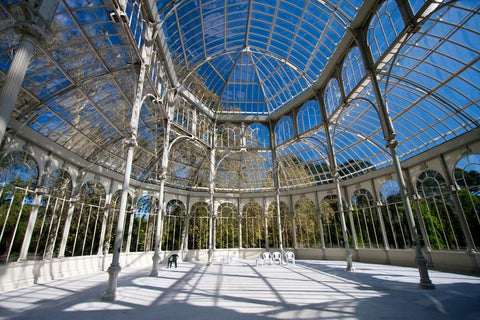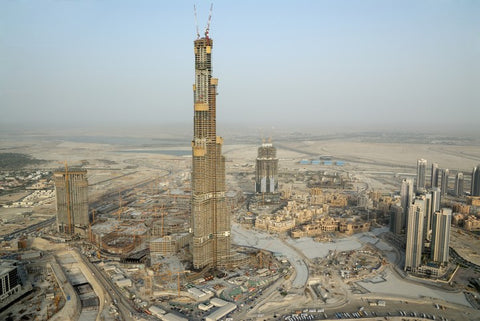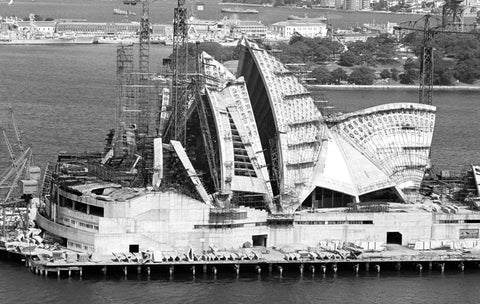Welcome to a captivating journey through the world of modern architecture, where functionality meets aesthetics in perfect harmony.
Today, we delve into one of the most versatile and innovative materials that have revolutionised the industry – Aluminium U Channel.
Gone are the days when architecture was solely focused on serving practical purposes; now it's all about creating visually stunning structures that leave us breathless.
What is Aluminium U Channel?
Aluminium channel is a versatile and popular building material that has been widely used in modern architecture. It is a type of extruded aluminium profile with a distinct "U" shape, hence the name. This unique shape gives the U channel exceptional strength and rigidity while also allowing for flexibility in design.
The use of aluminium in construction dates to the early 20th century, but it wasn't until the mid-20th century that aluminium U channels became increasingly popular due to their lightweight nature, durability, and corrosion-resistant properties. Today, it has become an indispensable element in modern architectural design.
One of the key features of aluminium U channel is its versatility. It can be used both indoors and outdoors for various applications such as structural support, cladding, framing, and decorative purposes. Its sleek and modern appearance makes it a popular choice among architects and designers looking to achieve a contemporary look for their projects.
In terms of functionality, U-shaped aluminium channel offers several advantages over other building materials. Firstly, its lightweight nature makes it easy to handle and transport on construction sites. This not only saves time but also reduces labour costs. Additionally, its high strength-to-weight ratio allows for larger spans without compromising on structural integrity.
Another important aspect of aluminium channel is its corrosion resistance. Unlike steel or iron which are prone to rusting when exposed to moisture or harsh weather conditions, aluminium does not corrode easily. This makes it ideal for outdoor applications where exposure to elements is inevitable.
Moreover, aluminium U-channel is highly customisable as it can be cut into different lengths and shapes depending on specific project requirements. It can also be easily painted or powder-coated in various colours to match the overall aesthetic of a building.
The use of aluminium U-channel in modern architecture goes beyond functionality; it also adds an aesthetically pleasing element to buildings. With its clean lines and sleek finish, it adds a modern and contemporary touch to any structure, making it a popular choice among architects and designers.
The introduction of aluminium U-shaped channel has greatly revolutionised modern architecture. Its versatility, functionality, durability, and aesthetic appeal make it an indispensable building material for various applications. In the following sections of this article, we will explore in detail the different ways in which aluminium U-channel is used in modern architecture.
History and Evolution of Aluminium U-Channel in Architecture
The use of U-shaped aluminium channel and other aluminium channel types in architecture dates to the 19th century when it was first introduced as a structural element in buildings. Its lightweight and durable nature made it an ideal choice for various construction projects, especially in the industrial sector.
Over time, its applications expanded to include commercial and residential structures as well.
One of the earliest examples of aluminium channel sections being used in architecture is the Crystal Palace designed by Joseph Paxton for the Great Exhibition of 1851. The entire structure was built using cast iron columns and beams with infills made of glass panels held together by aluminium U-channels.
This innovative use of aluminium not only showcased its potential as a versatile building material but also helped create a sense of lightness and transparency in the design.

In the early 20th century, architects started experimenting with different forms and shapes of aluminium U-channel to incorporate them into their designs.
One notable example is Le Corbusier's Villa Savoye (1928-1931), which featured horizontal bands of exposed concrete interlaced with vertical strips of metal windows framed with thin aluminium profiles. This design not only added visual interest but also served to break down the large expanse of walls, creating a harmonious balance between solid and void elements.
The popularity of aluminium U-channel continued to grow throughout the mid-20th century due to its affordability and ease of production.
Along with aluminium angle, aluminium flat bar and aluminium round bar, it became widely used in curtain wall systems – a non-load bearing cladding system that provides protection from weather conditions while allowing natural light into buildings. This development revolutionised modern architecture by enabling architects to create all-glass facades without compromising on structural integrity.
Today, we can see numerous examples where various aluminium channel types have been utilised to enhance both functionality and aesthetics in modern architecture. Its flexibility allows for intricate detailing, making it an ideal choice for creating unique shapes and patterns on building facades or interior spaces.
In addition, its corrosion-resistant properties make it a durable choice for outdoor applications, making it a popular material for balcony rails, canopies, and louvers.
In recent years, the use of aluminium channel sections in architecture has also become more sustainable.
With advancements in technology, it is now possible to produce aluminium using renewable energy sources, reducing its environmental impact. Additionally, aluminium can be recycled multiple times without losing its quality or strength, making it a highly sustainable option for building materials.
The history and evolution of aluminium U-channel in architecture is a testament to its versatility and adaptability as a building material. From its humble beginnings as an industrial structural element to being an integral part of modern architectural designs, aluminium U-channel continues to play a significant role in shaping the built environment.
Case Studies of Iconic Buildings Utilizing Aluminium U Channel
One of the most well-known examples is the Burj Khalifa in Dubai. Standing at 828 meters tall, it is currently the tallest building in the world. The exterior facade of this impressive structure is made up of 26,000 aluminium panels that are held together by aluminium U-channels.
These channels not only provide structural support but also create a sleek and seamless appearance on the building's surface. The use of aluminium U-channel allowed for faster installation and reduced weight compared to traditional steel supports.

Another iconic building that showcases the versatility of aluminium U-channel is the Guggenheim Museum Bilbao designed by Frank Gehry. This modern art museum features curved shapes and a dynamic facade that captures the eye from every angle.
Aluminium U-channels were used to create an intricate framework for the building's exterior panels, allowing for flexibility in design while providing stability to withstand extreme weather conditions.

Moving onto a more historical structure, we have the Sydney Opera House in Australia. This architectural marvel was designed by Jørn Utzon and completed in 1973 after over a decade of construction. The roof of this iconic landmark is made up of over one million interlocking tiles supported by an intricate system of steel trusses held together by aluminium U-channels.
This innovative use of materials resulted in a lightweight yet resilient structure that has become synonymous with Sydney's skyline.

In addition to these grand structures, smaller-scale buildings also utilise aluminium U-channel for both functional and aesthetic purposes. For example, Zaha Hadid Architects Heydar Aliyev Centre in Azerbaijan features sweeping curves and bold lines made possible using aluminium U-channels.
The material's flexibility allowed for the creation of complex shapes while providing a sturdy structure for the building's unique design.
![]()
These case studies of iconic buildings demonstrate the diverse applications and benefits of using aluminium U-channels in modern architecture. From providing structural support to creating seamless facades and enabling unique designs, this versatile material continues to play a vital role in pushing the boundaries of architectural possibilities.



